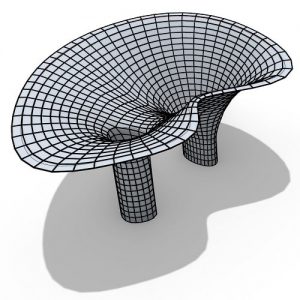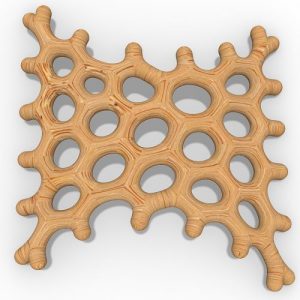َScience Toys
This video by PhysicsFun would show you 3 minutes of oddly satisfying scientific curiosities featuring various engines with candles, ferrofluid toys, kinetic art that uses physics, optical illusions, various forms of dices, math toys/shapes and more mindblowing stuff!

Trichroic Beam Splitter: this cube of four prisms with dichroic optical coatings allows a beam of white light to be separated into red, green, and blue. Used in multi-element CCD array cameras and other optical instruments.

Ambiguous Object Illusion: an incredible new design by Kokichi Sugihara of Meiji University in Japan, the inventor of this illusion and art form. A clever combination of reflection, perspective, and viewing angle produce this striking illusion.

Dudeney’s Dissection: an equilateral triangle can be cut (dissected) into four pieces that will then assemble into a square. This hinged model is comprised of precision machined and anodized aluminum, and can be folded back and forth between the two simplest regular polygons. It is not known if a similar three piece dissection is possible. Also called the haberdasher’s problem and described in 1907 by Henry Dudeney it is the only 4 piece solution known.

Tesla’s Egg of Columbus: a copper ellipsoid egg (PhiTOP) mysteriously spins and stands upright in this modern version of Tesla’s famous demonstration from the 1893 World’s Fair in Chicago that first showcased the principles behind wireless power transfer and his AC induction motor. Rotating magnetic fields from under the wooden platform induce electric eddy currents to flow in the copper PhiTOP- these currents then create their own magnetic field which oppose the initial fields underneath and pushes the PhiTOP to spin. This version differs from Tesla’s in that the rotating magnetic fields are created by, well, a pair of rotating neodymium magnets (revealed by lifting the top platform in this model). Credit to astrophysicist Kenneth Brecher, the creator of the PhiTOP, and this unique means of using a common lab magnetic stirrer to create the induced currents.

Kalliroscopes: rheoscopic fluid reveals the turbulence induced in an enclosed fluid by simple movements of the container. Invented and produced by artist and inventor Paul Matisse in the 1970s, suspended microscopic flat crystals of guanine reflect light and allow visualization of the fluid’s motion. This rheoscopic fluid is special in that the guanine crystals are the same density as the tetrachloroethylene liquid so the crystals never settle to the bottom making the fluid reactive to showing the slightest movement.




























Comments